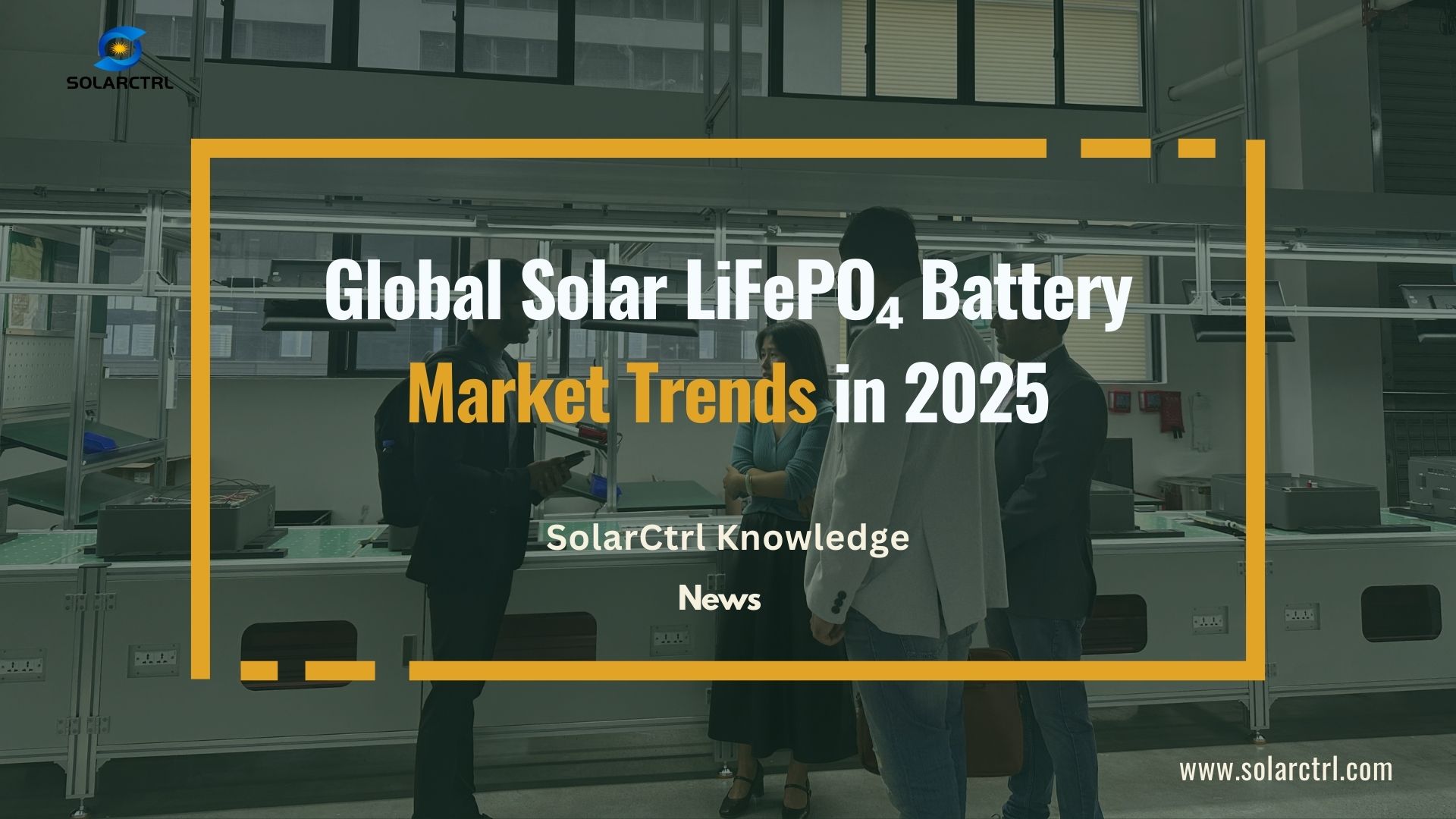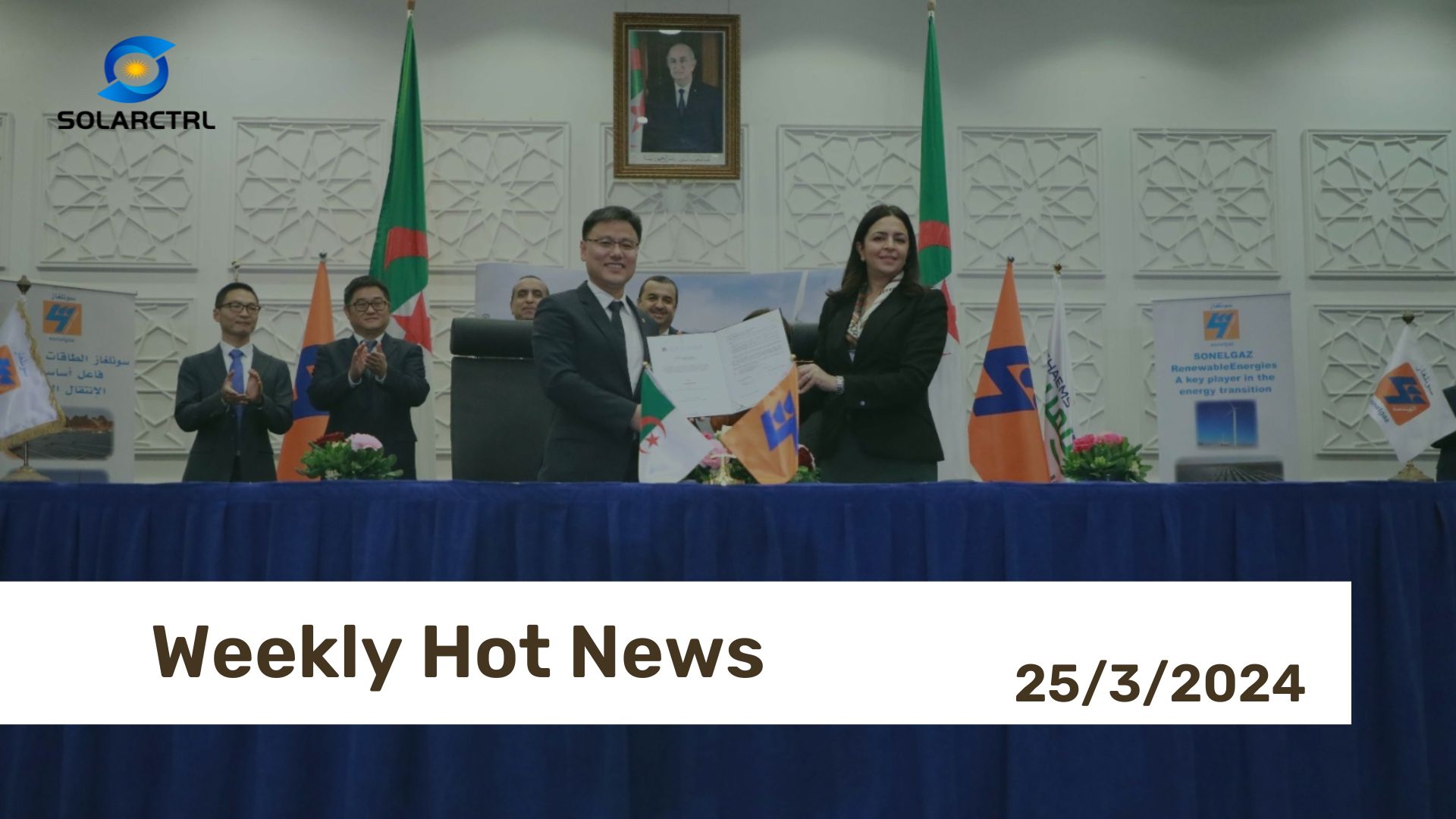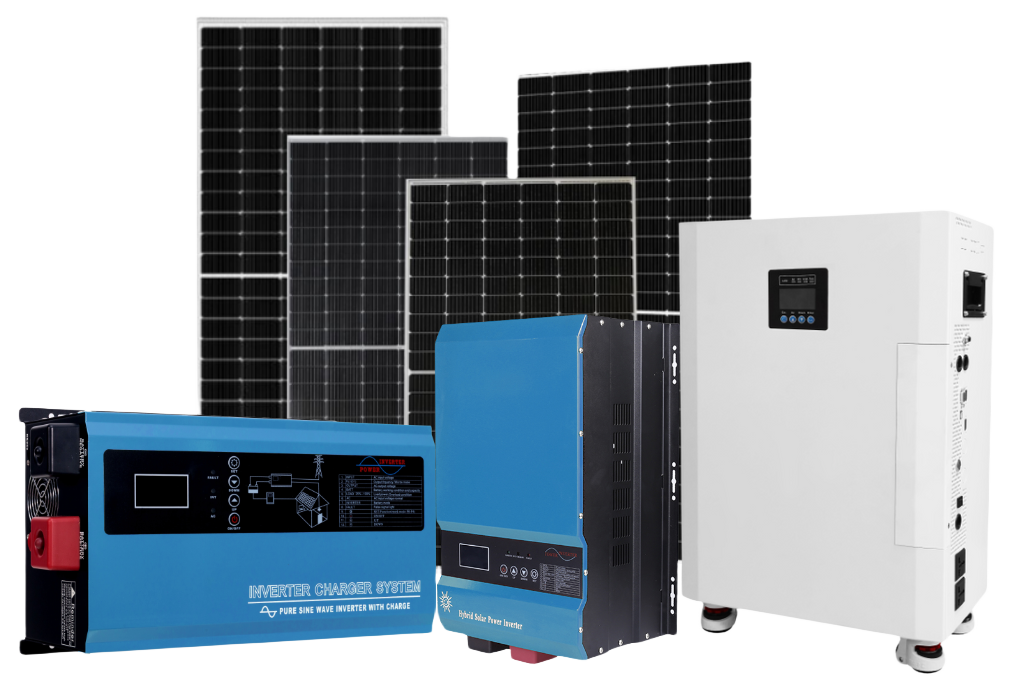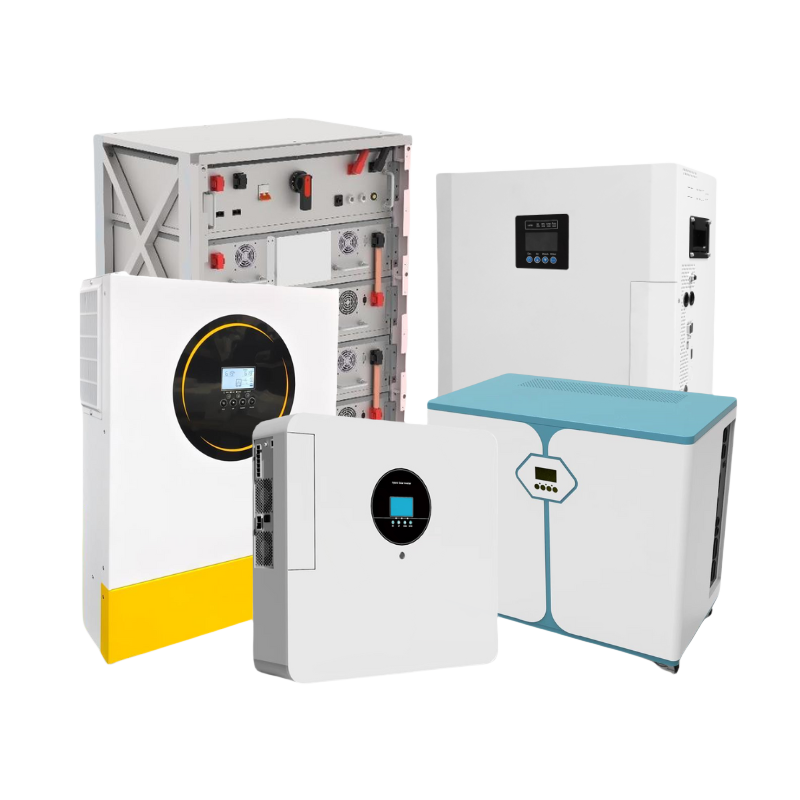Introduction
Within the intricate dance of solar energy systems, the inverter plays a leading role. But what determines whether this crucial component waltzes gracefully through the years or stumbles early? Let’s unpack the factors that play pivotal roles in the lifespan of a solar inverter and then explore how we ensure longevity.
Part 1: Factors Affecting the Lifespan of Solar Inverters
In the realm of solar energy systems, the durability of an inverter is not a matter of luck but a multifaceted affair. It’s like maintaining a high-performance vehicle; you need the right parts, proper alignment, consistent upkeep, and a keen eye for updates to keep it running smoothly. In the same vein, the longevity of a solar inverter is influenced by its manufacturing quality, the compatibility with the solar system, the conditions it operates in, how it’s used, and how well it’s maintained and updated. Let’s break down these elements and understand how they collectively dictate the operational lifespan of a solar inverter.
1.1 Quality of Manufacturing

Firstly, the build quality of a solar inverter is fundamental. A solar inverter is only as good as the sum of its parts. High-grade components, efficient cooling systems, and sophisticated monitoring systems are the trifecta of longevity.
– High-grade components: when we talk about high-grade components, we’re referring to the selection of parts that meet stringent standards for durability and performance. These components have to withstand the rigors of constant use, fluctuating power loads, and sometimes harsh environmental conditions. For instance, using industrial-grade capacitors, which are the heartbeats of the inverter’s circuitry, ensures a longer life expectancy. They are less likely to degrade in extreme temperatures, which is a common condition for many solar energy systems
– Efficient Cooling Systems: heat is a formidable enemy of electronic components. Inverters operate by converting DC power from solar panels to AC power for use, and this process generates heat. Without an effective cooling mechanism, this heat can build up and cause damage over time.
– Sophisticated Monitoring Systems: the inclusion of sophisticated monitoring systems is akin to having a vigilant guardian for the inverter. These systems keep a constant watch on the inverter’s performance, identifying and alerting for any anomalies that might indicate potential issues. For example, if an inverter’s output falls below expected efficiency levels, the monitoring system can trigger an alert so that maintenance can be undertaken before a small issue escalates into a major problem. This not only ensures immediate corrective measures but also aids in predictive maintenance, allowing us to address components that are likely to fail before they actually do, thereby averting system downtimes and extending the inverter’s operational lifespan.
1.2 Compatibility with Solar System
For optimal performance, a solar inverter must be compatible with the specific electrical characteristics of the solar panels it connects to. This means the inverter’s input parameters — primarily voltage and current capacities — should closely match the output of the solar panels. If the solar array produces more voltage or current than the inverter can handle, it can lead to overloading and potential damage. Conversely, an underutilized inverter wastes potential energy.
1.3 Installation Conditions and Environmental Factors
The performance and longevity of a solar inverter are heavily influenced by its installation environment. This aspect cannot be overstated. Whether indoors or outdoors, several environmental factors come into play, each affecting the inverter’s efficiency and lifespan in significant ways.
Indoor Installation: Installing an inverter indoors usually means a more controlled environment. It is protected from direct exposure to elements like rain, extreme sunlight, and dust. However, even indoors, factors like ventilation, humidity, and temperature fluctuations need careful consideration, Especially the proper airflow. An inverter enclosed in a tight space with poor airflow can overheat, which reduces its efficiency and potentially shortens its lifespan.
Outdoor Installation: On the other hand, outdoor installations expose inverters to the full spectrum of environmental conditions. This includes the potential for moisture ingress, temperature extremes, and exposure to dust and debris. What’s more, even outdoor units need to be placed in a manner that allows for free air circulation around them.

1.4 Usage Patterns
The usage patterns of an Inverter will also affect its lifespan, such as electrical load and the frequency of cycling on and off.
Electrical Load Compatibility:
Load compatibility is a key factor in preserving an inverter’s lifespan. Continuously operating at maximum capacity can accelerate component wear and reduce the overall lifespan of the inverter. It’s much like consistently driving a car at top speed; the strain can lead to quicker degradation. Therefore, selecting an inverter whose capacity exceeds the average load, with some allowance for occasional surges, ensures that it operates within a comfortable range, reducing stress on its components and extending its useful life.
Cycling Frequency:
The frequency with which an inverter is turned on and off, also known as cycling, can affect its components, particularly those involved in the start-up and shut-down processes. Frequent cycling can cause thermal stress and mechanical wear, reducing the inverter’s operational life.
1.5 Regular Cleaning and Maintenance
Regular cleaning and maintenance play a pivotal role in the health and longevity of solar inverters. Just as dust and grime can impair the performance of any precision equipment, solar inverters are no exception. Accumulated dirt and debris can obstruct cooling mechanisms, leading to overheating, which is one of the primary threats to an inverter’s efficiency and durability. Furthermore, such build-up can cause electrical insulation to deteriorate and increase the risk of short circuits.
Regularly scheduled cleaning ensures that these risks are mitigated. By maintaining a clean environment, the inverter operates under optimal thermal conditions, and its electrical components remain protected from the corrosive effects of dust and moisture. This not only enhances the performance and efficiency of the inverter but also significantly extends its operational lifespan, ensuring reliable and uninterrupted service from the solar power system.
1.6 Software Updates

In the rapidly evolving landscape of solar technology, keeping a solar inverter’s software up-to-date is crucial for maintaining its efficiency and longevity. Firstly, these updates often include improvements in the efficiency of energy conversion, allowing the inverter to do more with the power it receives. They can also provide enhanced compatibility with new types of solar panels or battery storage systems, reflecting the ongoing advancements in solar technology.
Moreover, software updates frequently address security vulnerabilities. As many modern inverters are connected to the internet for monitoring and control, they can be susceptible to cyber threats. Regular updates ensure that the inverter’s software is fortified against such risks.
Additionally, these updates can adapt the inverter to changes in grid requirements. As energy grids become smarter and more interactive, inverters need to communicate effectively with these systems. Updated software ensures this communication is seamless, enabling features like demand response and grid stabilization, which are becoming increasingly important.
Part 2: Extending Inverter Lifespan
So, how can we extend the lifespan of a solar inverter? Based on the analysis of factors affecting an inverter’s lifespan, we can draw some valuable insights. Below, I will summarize how to extend the lifespan of an inverter from four aspects: choosing reliable suppliers and compatible products, environmental protection, technical support and training, and regular cleaning and data monitoring.
2.1 Choosing Reliable Suppliers and Compatible Products
Choosing the right supplier and compatible products is a critical decision in extending the lifespan of a solar inverter. A reliable supplier is one who not only offers high-quality products but also demonstrates a commitment to sustainability and technological innovation. This choice ensures access to inverters that are robustly built and capable of enduring the rigors of long-term operation.

The importance of product compatibility cannot be overstated. An ideal supplier provides inverters that align perfectly with the specific requirements of your solar system. This means they offer products that are not just universally efficient but tailored to meet the unique voltage and current specifications of different solar setups. Such precision ensures optimal performance and minimizes the risk of stress on the inverter due to electrical mismatches.
2.2 Environmental Protection
Environmental protection plays a pivotal role in extending the lifespan of a solar inverter. It’s about creating and maintaining conditions that safeguard the inverter from external stresses. This involves a multifaceted approach, encompassing both the physical placement and the protective measures employed.
Firstly, the choice of location for an inverter is crucial. Whether placed indoors or outdoors, the environment needs to be assessed for factors like temperature extremes, moisture, and potential exposure to dust and debris. For outdoor settings, it’s essential to ensure that the inverter is shielded from direct sunlight, rain, and extreme temperatures, which could lead to overheating or cooling issues.
Indoor environments, while generally more controlled, still require attention. Factors such as ventilation, humidity, and ambient temperature play a significant role. Inverters should be installed in well-ventilated areas where they are not exposed to damp conditions or excessive heat sources.
Moreover, the use of robust enclosures is a key strategy in environmental protection. These enclosures are designed to withstand various environmental challenges, from dust and debris that can clog cooling systems to moisture that can cause corrosion. A well-designed enclosure not only protects the physical components of the inverter but also ensures that its cooling mechanisms function efficiently.
2.3 User Guide and Technical Support

User guide and technical support are critical elements in safeguarding and maximizing the efficiency of a solar inverte. A comprehensive user guide serves as the first line of defense, offering detailed insights into the proper use, maintenance, and troubleshooting of the inverter. This resource is invaluable for everyday operation, helping users to understand their system better and to identify any irregularities quickly.
On the other hand, technical support acts as a backbone for more complex or unforeseen issues. This support bridges the gap between standard operational knowledge and specialized expertise. It’s not just about fixing problems as they occur; technical support is also about providing ongoing advice and updates that keep the inverter functioning optimally. With access to skilled technicians and experts, users can confidently address a wide range of issues, from simple queries to complex technical challenges.
2.4 Regular Maintenance and Data Monitoring
Routine maintenance encompasses a variety of tasks, from physical inspections and cleaning to component checks and replacements. This process is vital for identifying and addressing potential issues before they develop into major problems. Regular cleaning, for instance, prevents the buildup of dust and debris, which can impede cooling and lead to overheating. Checking and tightening electrical connections ensures optimal operation and reduces the risk of failures.
Data monitoring, on the other hand, offers a more technologically advanced approach. By utilizing state-of-the-art monitoring tools, system operators can continuously track the performance of their inverters. These tools provide real-time data on various operational parameters, such as output efficiency, temperature, and electrical loads. This constant vigilance allows for immediate detection of anomalies or declines in performance, signaling when maintenance or intervention is needed.
Conclusion
The lifespan of a solar inverter is not a fixed destiny but is influenced by numerous controllable factors. By understanding and addressing these elements, particularly through choosing quality products, ensuring proper environmental conditions, and committing to regular maintenance and expert support, one can significantly extend the life of their solar inverter.
Engaging with a dedicated supplier like SolarCtrl not only enhances this journey but also ensures that the solar inverter thrives, contributing to the resilience and efficiency of solar power systems globally.
With SolarCtrl, you gain a partner committed to maximizing the potential and longevity of your solar energy investments.





















